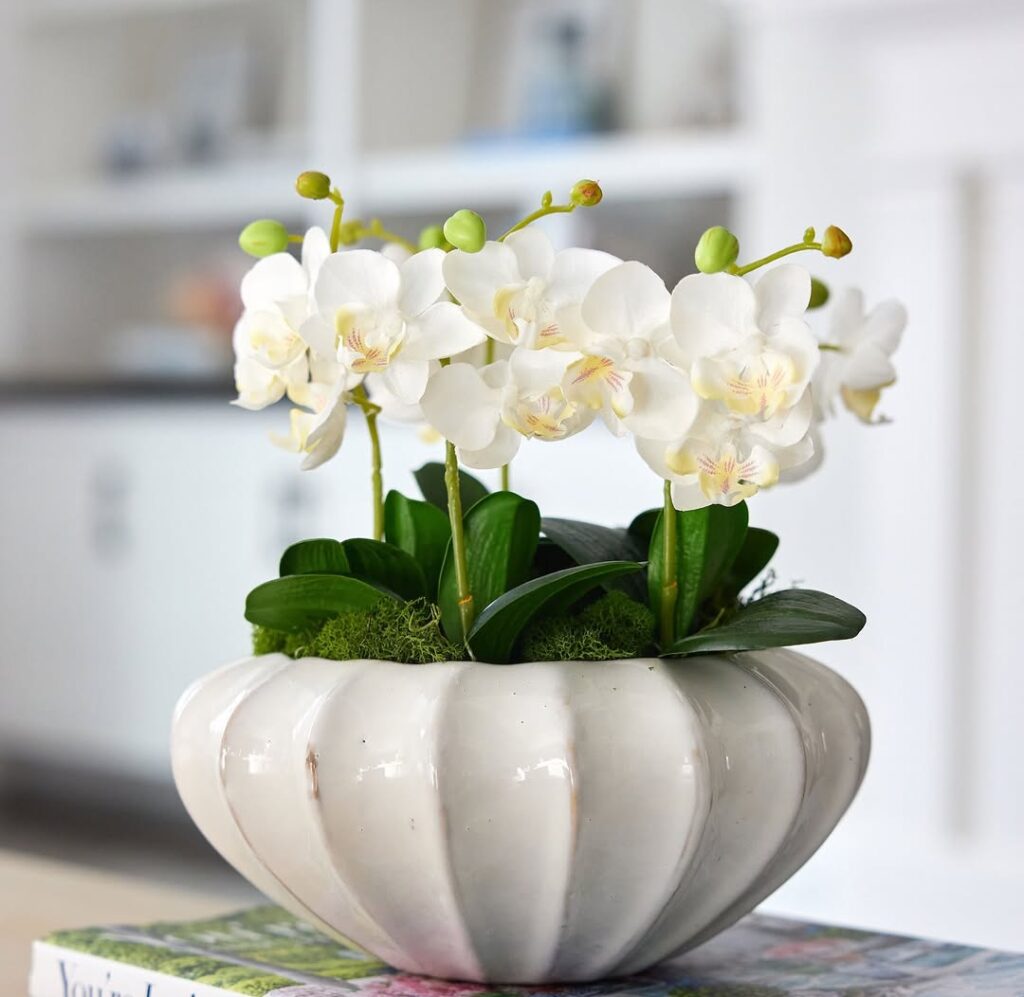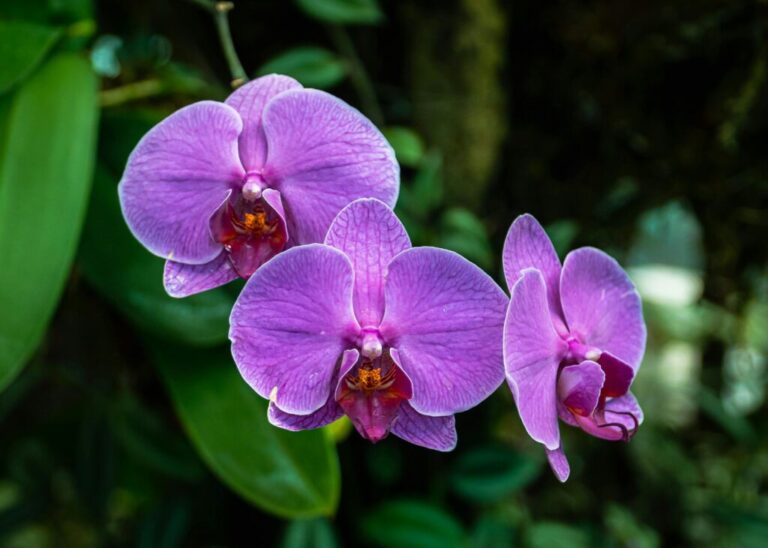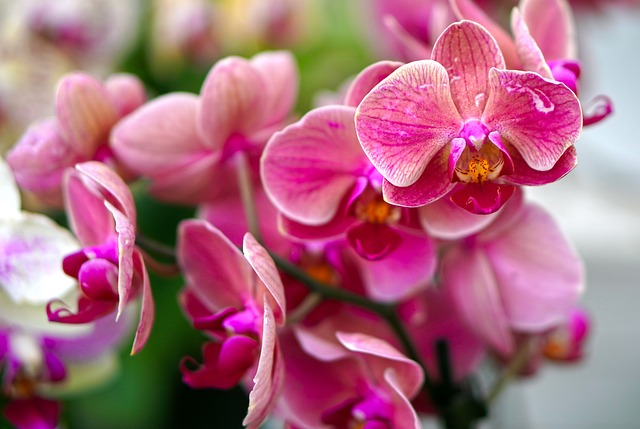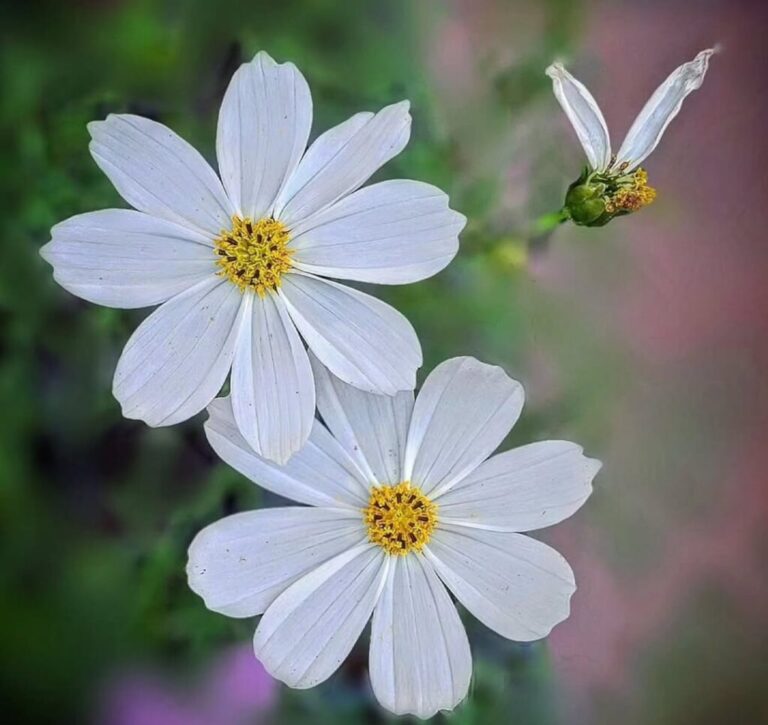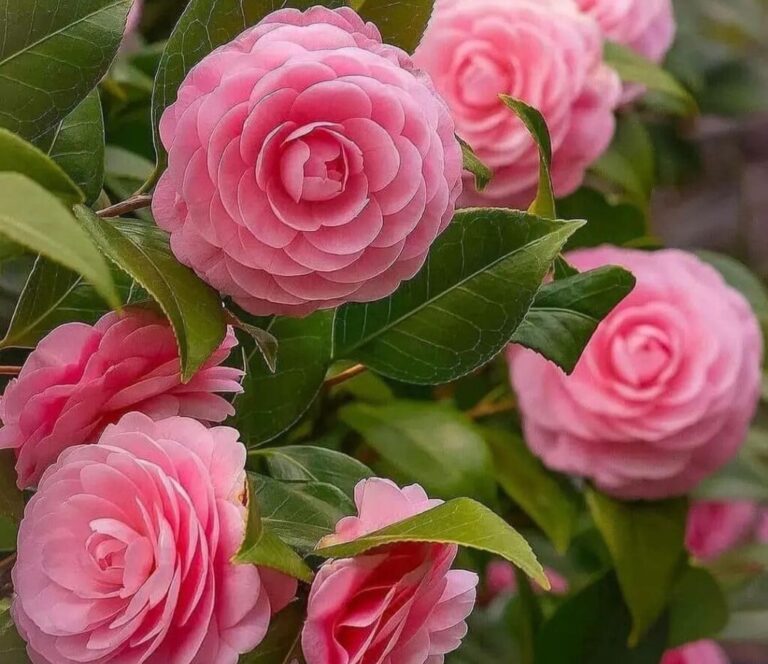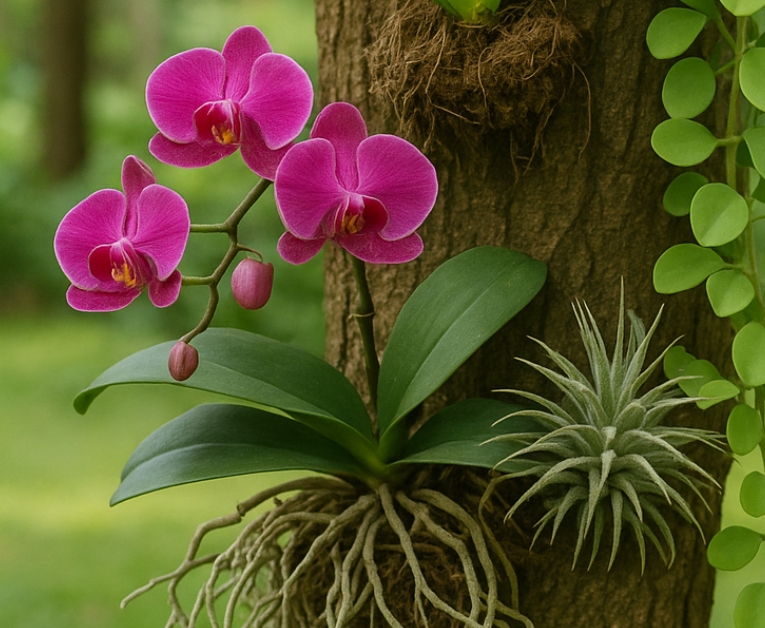Repotting may seem like a simple task, but when it comes to delicate houseplants like mini orchids, it’s a step that can make or break your plant’s health. Mini orchid repotting is more than just changing a pot—it’s about understanding your plant’s unique needs, timing, and care techniques to ensure continued growth and blooming. Many growers, especially beginners, often overlook critical steps or rush the process, leading to root rot, transplant shock, or even stunted blooms.
Whether your mini orchid is outgrowing its pot or the potting mix has broken down, knowing exactly what to do—and what to avoid—can mean the difference between a thriving orchid and a struggling one. In this guide, you’ll uncover the 20 best dos and don’ts every grower must know to successfully repot their mini orchid and help it flourish for seasons to come.
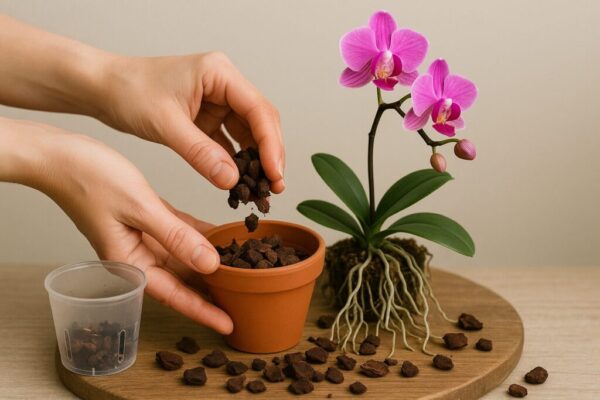
- 1 🌱 The 10 Best Repotting Dos
- 2 1. Do repot after blooming.
- 3 2. Do check the roots thoroughly.
- 4 3. Do use a sterile cutting tool.
- 5 4. Do soak the orchid before repotting.
- 6 5. Do choose a breathable pot.
- 7 6. Do use a fresh orchid potting mix
- 8 7. Do repot during active growth.
- 9 8. Do stabilise the orchid after repotting.
- 10 9. Water lightly after repotting.
- 11 10. Do monitor for shock or signs of stress.
- 12 🚫 The 10 Repotting Don’ts
- 13 11. Don’t repot a flowering mini orchid.
- 14 12. Don’t reuse old potting mix.
- 15 13. Don’t use oversized pots.
- 16 14. Don’t pull on stuck roots.
- 17 15. Don’t bury the crown.
- 18 16. Don’t ignore root rot signs.
- 19 17. Don’t rush the process.
- 20 18. Don’t compact the potting mix too tightly.
- 21 19. Don’t expose freshly repotted orchids to direct sun.
- 22 20. Don’t water immediately in all cases.
- 23 FAQs on Mini Orchid Repotting
🌱 The 10 Best Repotting Dos
1. Do repot after blooming.
Repotting during blooming can lead to flower loss and plant shock. Always wait until the blooming cycle ends, as this allows the orchid to focus its energy on root growth and adaptation to the new potting medium instead of trying to maintain blooms.
2. Do check the roots thoroughly.
When removing your mini orchid from its pot, examine the roots carefully. Firm, green or white roots are indicative of good health. Any mushy, black, or hollow roots should be cut off with sterile scissors. This step is vital to prevent rot from spreading in the new medium.
3. Do use a sterile cutting tool.
Never use dirty or rusty scissors on your orchid’s roots. Always disinfect tools using alcohol or boiling water before trimming. Clean tools reduce the risk of transmitting fungal or bacterial diseases, ensuring your orchid remains healthy after the repotting process.
4. Do soak the orchid before repotting.
Soak the entire orchid in lukewarm water for about 15–20 minutes before repotting. This softens the roots, making them more pliable and easier to manage without breaking. It also helps you untangle them from the old media more gently and safely.
5. Do choose a breathable pot.
Mini orchids thrive in pots that allow proper airflow. Slotted clear plastic pots or terracotta containers are ideal because they promote drainage and aeration. Good air circulation around roots helps prevent root rot and allows you to monitor moisture levels more effectively.
6. Do use a fresh orchid potting mix
Always use a new, high-quality orchid mix containing bark, sphagnum moss, perlite, or charcoal. Never reuse old potting media, as it can be compacted or contaminated with fungi and pests. Fresh mix ensures better drainage and a clean start for your mini orchid.
7. Do repot during active growth.
The best time to repot your mini orchid is when it shows signs of new growth—such as fresh roots or new leaves. During this phase, the plant adjusts more quickly and develops stronger root systems, helping it adapt better to the new environment.
8. Do stabilise the orchid after repotting.
After placing the orchid in its new pot, ensure it remains stable and doesn’t wobble. Use clips, stakes, or a gentle tie to anchor it. This helps the orchid focus on establishing roots rather than wasting energy trying to stay upright in unstable conditions.
9. Water lightly after repotting.
If you didn’t trim many roots, give your orchid a light watering a day after repotting. However, avoid heavy watering immediately. Use water sparingly to avoid bacterial infections and to let wounds heal. Depending on the media you used, modify your watering schedule.
10. Do monitor for shock or signs of stress.
Watch your little orchid for the first two to three weeks. Wilting leaves, no root growth, or black spots can be signs of transplant shock. Providing indirect light and maintaining proper humidity can reduce stress and help the orchid recover faster.
🚫 The 10 Repotting Don’ts
11. Don’t repot a flowering mini orchid.
Repotting a mini orchid while it’s flowering can cause severe stress, leading to flower drop or even permanent damage to the plant. Always wait until the bloom finishes to minimise the risk of disrupting its natural flowering cycle and avoid unnecessary energy loss.
12. Don’t reuse old potting mix.
Used orchid potting mix breaks down over time, reducing aeration and increasing water retention. It also harbours pests and pathogens. Reusing it increases the risk of root rot, fungal infection, or pest invasion. Always start fresh to give your mini orchid a safe environment.
13. Don’t use oversized pots.
Mini orchids should be repotted into snug containers. A pot that’s too large holds too much moisture, leading to soggy roots and eventual rot. Pick a pot that’s just slightly bigger than the root ball to maintain proper drainage and airflow for healthy growth.
14. Don’t pull on stuck roots.
When roots are tangled or stuck to the pot, never yank them forcefully. This can cause root tearing, which increases infection risk. Instead, soak the root ball in water and gently massage the roots loose or use a sterilised stick to untangle them safely.
15. Don’t bury the crown.
Burying the orchid’s crown—the point where leaves emerge—can lead to rot. Always ensure it sits above the media surface. Water can collect in the crown if it’s buried, making it the perfect breeding ground for harmful bacteria and fungi.
16. Don’t ignore root rot signs.
Before repotting, always inspect roots for signs of rot: black, mushy, or foul-smelling sections. Leaving them intact risks spreading disease throughout the pot. Trim all affected roots using a sterile tool to give your orchid the best chance of healthy recovery.
17. Don’t rush the process.
Repotting should never be rushed. Take your time to inspect the orchid, trim dead parts, and carefully arrange it in the new pot. Patience ensures you don’t overlook any signs of damage and helps prevent mistakes that could cost your orchid’s health.
18. Don’t compact the potting mix too tightly.
Suffocating the roots occurs when the mixture is compressed too firmly, which decreases ventilation. Lightly pack the medium around the roots so they stay in place but still have room to breathe. This encourages root development and reduces the chances of stagnant moisture.
19. Don’t expose freshly repotted orchids to direct sun.
Right after repotting, mini orchids are more vulnerable. Avoid placing them in strong sunlight, as it may burn their leaves or stress the plant further. Keep them in bright but indirect light until they settle and show new growth.
20. Don’t water immediately in all cases.
If you’ve had to trim many roots, wait 1–2 days before watering. This allows cut areas to callous and heal, preventing infection. Immediate watering can cause bacteria or fungus to enter the wounds, so timing your first post-repotting water is crucial.
Repotting a mini orchid doesn’t have to be intimidating. By following these 20 best dos and don’ts, you ensure your orchid has a smooth transition into its new home. Observe your plant, give it time, and let nature take care of the rest. Happy growing!
FAQs on Mini Orchid Repotting
1. What is Mini Orchid Repotting and why is it necessary?
Mini Orchid Repotting involves transferring your mini orchid from its old potting medium to a new one. This procedure is necessary to maintain healthy root growth, prevent root rot, and replenish nutrients. Mini Orchid Repotting also gives you a chance to inspect for pests and diseases.
2. How often should I perform Mini Orchid Repotting?
Mini Orchid Repotting should typically be done every 1 to 2 years. However, if the potting medium breaks down, roots start to rot, or the plant becomes top-heavy, then immediate Mini Orchid Repotting is recommended to prevent damage and maintain overall orchid health.
3. What is the best time of year for Mini Orchid Repotting?
The best time for Mini Orchid Repotting is during early spring or right after the blooming season ends. This ensures that the orchid has time to recover and adjust before its next growth or blooming cycle begins. Avoid Mini Orchid Repotting during active blooming periods.
4. What type of pot should I use for Mini Orchid Repotting?
Choose a small, well-draining pot for Mini Orchid Repotting. Clear plastic pots are ideal as they allow light to reach the roots and help monitor moisture levels.For Mini Orchid Repotting to be successful, the pot should also have several drainage holes because proper airflow is essential.
5. Which potting medium is best for Mini Orchid Repotting?
A high-quality orchid bark mix is best for Mini Orchid Repotting. It provides airflow and retains just enough moisture. You can also add perlite or sphagnum moss for extra water retention, depending on your climate and the specific needs during Mini Orchid Repotting.
6. Can I use garden soil for Mini Orchid Repotting?
No, garden soil should never be used for Mini Orchid Repotting. It retains too much moisture and lacks proper aeration, leading to root rot. Always use a specialized orchid mix that supports the aerial root system and moisture needs of orchids during Mini Orchid Repotting.
7. How do I safely remove the orchid during Mini Orchid Repotting?
Gently squeeze the sides of the pot to loosen the roots, then carefully slide the plant out. Rinse off old medium from the roots using lukewarm water. Take your time with Mini Orchid Repotting to avoid damaging fragile roots or disturbing any healthy tissue.
8. Should I trim the roots during Mini Orchid Repotting?
Yes, trimming dead or mushy roots during Mini Orchid Repotting is beneficial. Rotten or blackened roots can be removed with sterile scissors. Firm, green or white roots are indicative of good health.This step ensures fresh growth and improves the success of Mini Orchid Repotting.
9. Can I repot a blooming orchid during Mini Orchid Repotting?
It’s not ideal to repot orchids in bloom, as this can stress the plant and cause bud drop. However, if the orchid is in distress or suffering from rot, emergency Mini Orchid Repotting may be necessary. Be gentle to preserve any active blooms if you must repot.
10. What should I do after Mini Orchid Repotting is complete?
After Mini Orchid Repotting, avoid watering for 3 to 5 days to let any root wounds dry and heal. Place the plant in a shaded area with good airflow. Resume normal watering and feeding gradually as the orchid adjusts to its new environment after Mini Orchid Repotting.
11. How can I tell if my Mini Orchid Repotting was successful?
Signs of successful Mini Orchid Repotting include new root growth, firm leaves, and eventually, fresh flower spikes. If the orchid appears healthy and continues to grow after a few weeks, your Mini Orchid Repotting was effective and beneficial for the plant’s development.
12. Are there any common mistakes to avoid during Mini Orchid Repotting?
Yes, common Mini Orchid Repotting mistakes include overwatering after repotting, using the wrong potting mix, or failing to trim dead roots. Always sterilize tools, avoid compacting the mix too tightly, and don’t expose the orchid to direct sunlight immediately after Mini Orchid Repotting.
13. What tools do I need for Mini Orchid Repotting?
You’ll need sterilized scissors, a new pot, fresh orchid potting mix, and gloves. Optional tools include root hormone and cinnamon powder to treat cuts. Proper tools make Mini Orchid Repotting easier, safer, and more efficient for both the plant and the grower.
14. Is Mini Orchid Repotting different from regular orchid repotting?
Yes, Mini Orchid Repotting often requires smaller pots and more precise handling due to the compact root systems. Mini orchids are more sensitive to root damage and overwatering, so Mini Orchid Repotting demands extra care and attention to detail compared to larger orchid varieties.
15. How can I make Mini Orchid Repotting easier for beginners?
For novices, set up your workspace, potting mix, and tools in advance. Watch a step-by-step video or read a guide. Take your time and don’t rush. With practice, Mini Orchid Repotting becomes a simple routine that boosts your orchid’s health and confidence as a grower.
